
| Mellinus arvensis |
| Authority | : | (Linné, 1758) |
| Nederlands | : | Gewone vliegendoder |
| Deutsch | : | Gelber Herbstfliegenjäger |
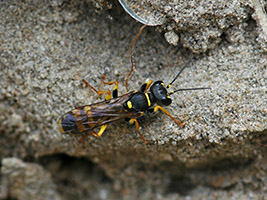 |
| Amstelveen, the Netherlands; 21 June 2008. |
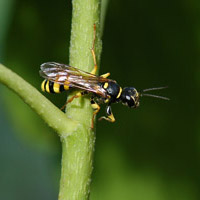 |
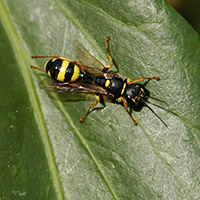 |
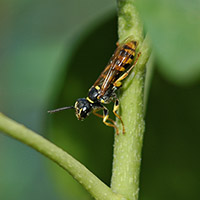 |
| Amstelveen, the Netherlands; 8 October 2006. | ||
| This wasp flies particularly late in the season, and is common in autumn - although occasionally it
can be seen much earlier, as in the top photograph. In autumn, Mellinus arvensis a regular visitor of
flowering Ivy, Hedera helix. Ivy is one of the last nectar sources in the season, and attracts
scores of flies, wasps, bees and butterflies - a flowering bush of Ivy can not only be smelled, but
even heared from quite a distance, because of the humming flies, bees etc! The wasp Mellinus is
not after the nectar, though: it hunts for flies. Since potential prey is abundant, you can often
see hunting wasps crawling through leaves and flowers, and occasionally you can witness
an attack and the handling of prey, as shown here. |
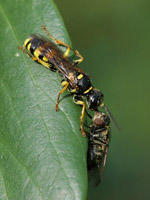 |
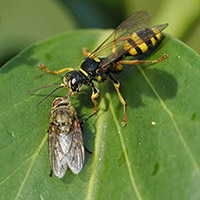 |
| Amstelveen, the Netherlands; 8 October 2006. | |
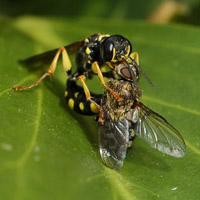 |
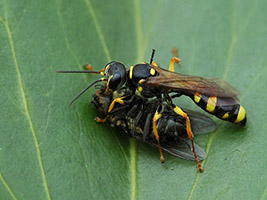 |
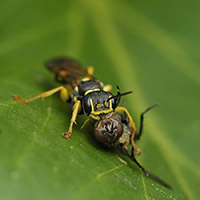 |
| Amstelveen, the Netherlands; 16 - 22 September 2007. | ||
| Female wasp inflicting a paralyzing sting to her prey, a fly in the genus Pollenia.
Next, female handling its Pollenia prey. Normally the wasp gets its prey quickly under control,
taking it in her legs under her belly, and flies of. Sometimes, however, it seems to be hard to find the
ideal position, and the wasp struggles with its paralyzed prey to find the proper position before flying off. |
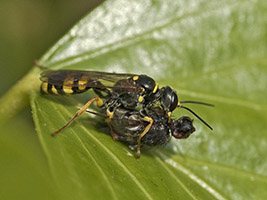 |
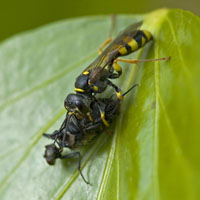 |
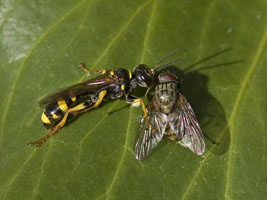 |
| Amsterdam, the Netherlands; 21 - 27 September 2008. | ||
| Left and middle: Female masticating prey, the fly Pollenia. After paralizing the prey,
the wasp most often flies rapidly away, to provision her nest with the prey. Every now and then,
however, you can watch a female feeding herself on a prey. Right: an exceptional prey species, Phaonia spec. |